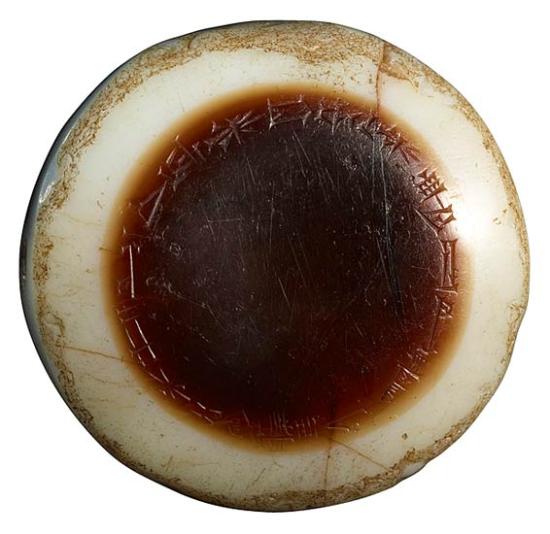
Eye Stone Amulet with a Dedication Inscription of King Nebuchadnezzar II in Akkadian
Inscribed: To Marduk, his lord, Nebuchadnezzar, king of Babylon, son of Nabopolassar, gave this for his life
Taking advantage of the stone's natural banding, agates were carved to resemble an eye. The votive inscriptions indicate the placement of the object on an altar or in a temple as a gift to a deity. The stones were thought to have some inherent power that would help protect the life of the person named in the inscription. These amulets probably adorned the cult statue of the god inscribed and were most likely worn in precious gold settings.
Nebuchadnezzar, whose name means "may (the god) Nabu protect the borders," was a great general, statesman, and builder with ambition and imagination, whose surviving monuments are without rival in Mesopotamia. The Babylon of Herodotus, including the Hanging Gardens, is largely the work of his architects.
The agate was found probably at Babylon, where Marduk was the patron god of the city.
